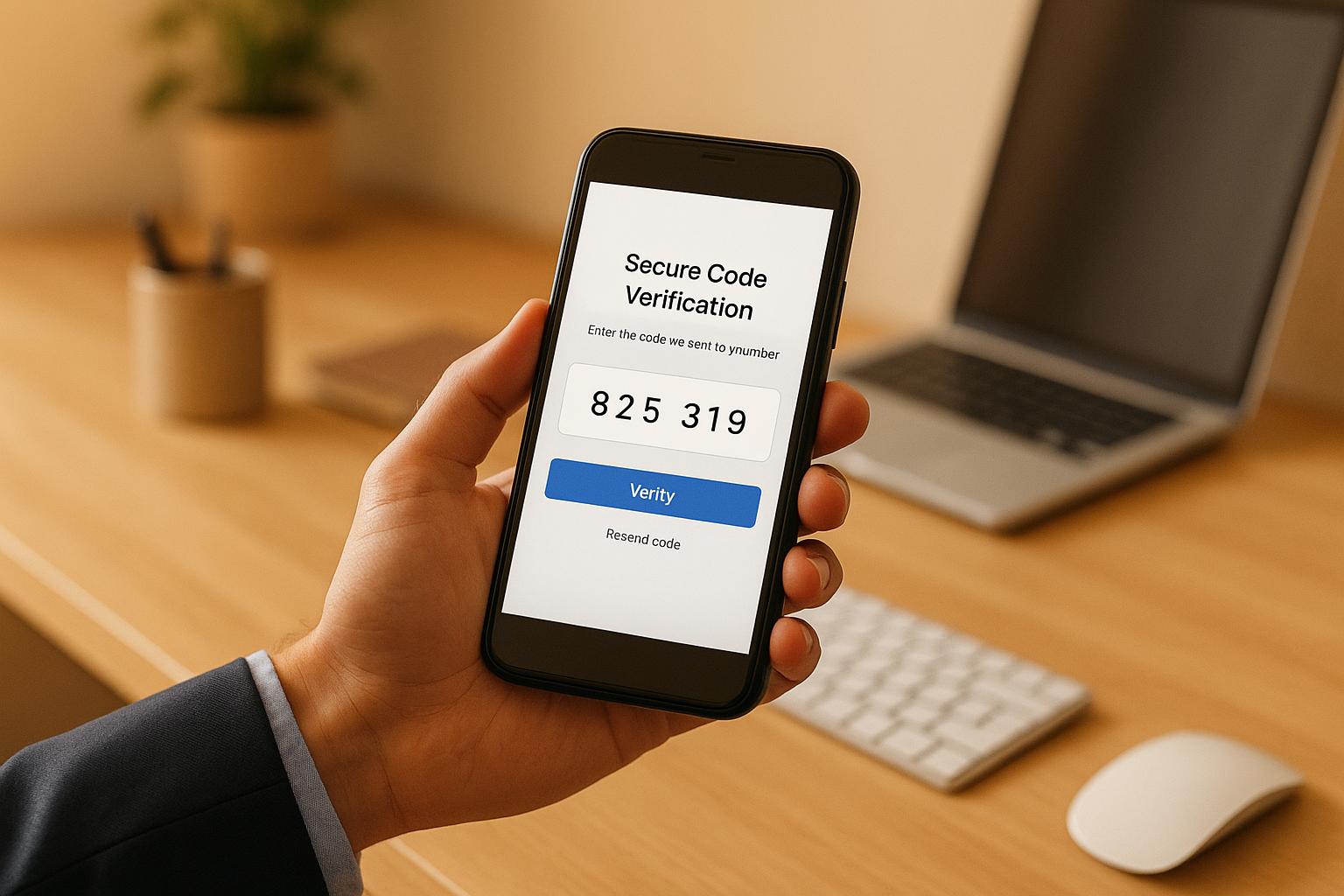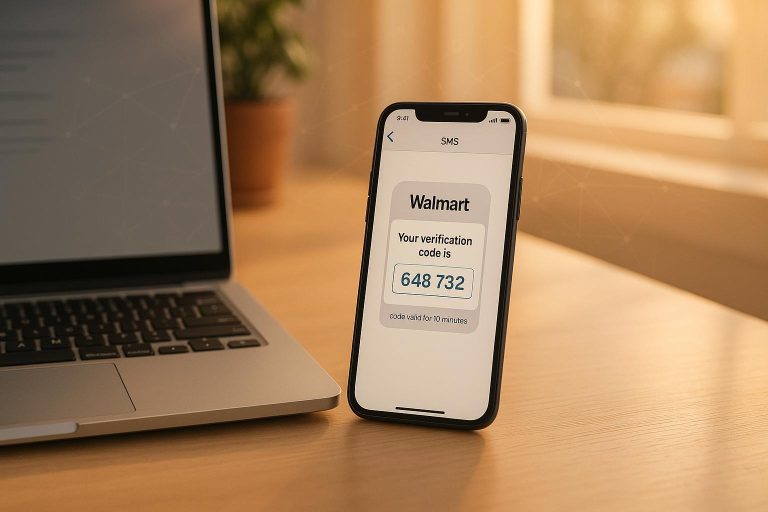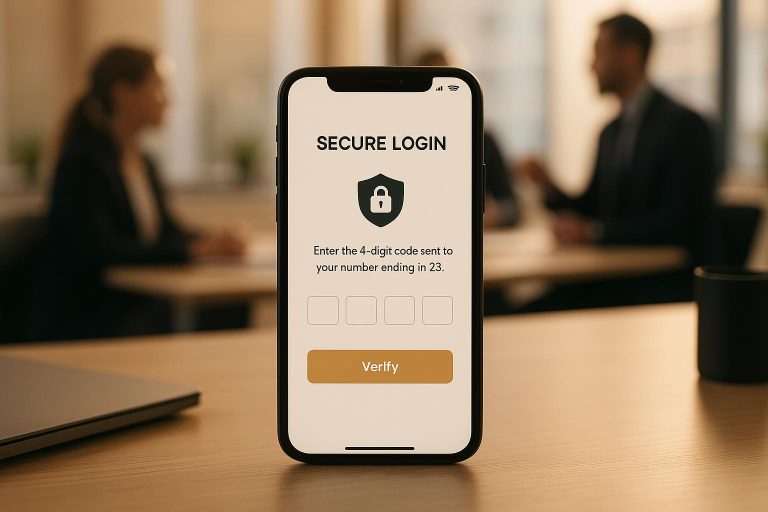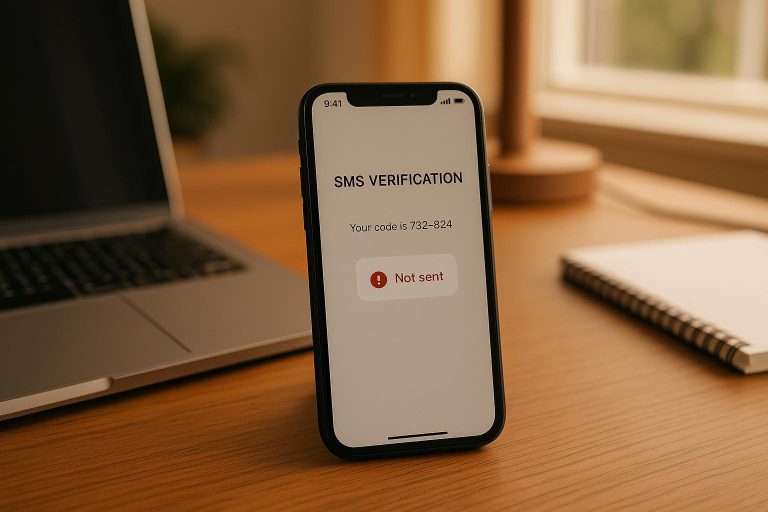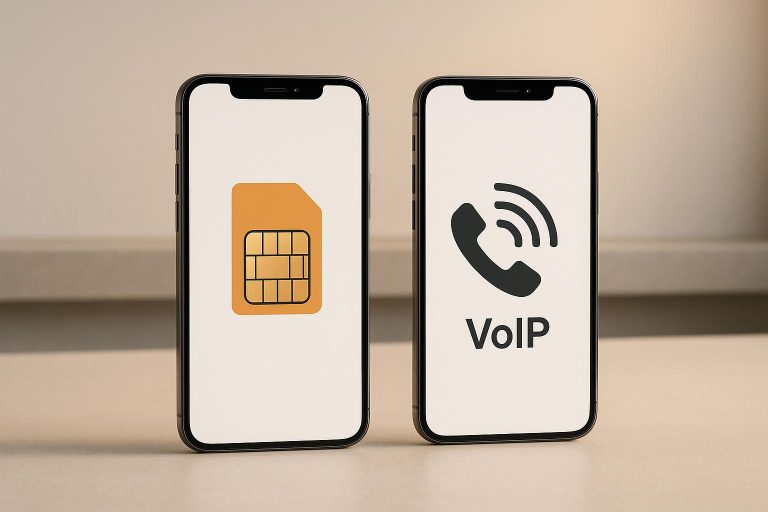Stripe Phone Verification: Why VoIP Numbers Fail and What Works
Stripe’s phone verification process often rejects VoIP numbers like Google Voice or RingCentral due to security concerns. These numbers are flagged because they’re internet-based, easily disposable, and lack traceability. Instead, Stripe prefers real-SIM numbers tied to physical SIM cards from major carriers (e.g., Verizon, AT&T). Real-SIM numbers ensure reliable SMS delivery and meet Stripe’s security and compliance requirements.
Key Takeaways:
- Why VoIP Numbers Fail: Easy to obtain/dispose, unreliable SMS delivery, and high fraud risk.
- Solution: Use real-SIM US numbers from trusted providers like JoltSMS for consistent Stripe acceptance.
- Cost: JoltSMS offers dedicated real-SIM numbers at $50/month with a money-back guarantee.
Switching to a real-SIM number eliminates common verification issues, ensuring smooth account setup and transaction security on Stripe.
Why VoIP Numbers Get Rejected by Stripe
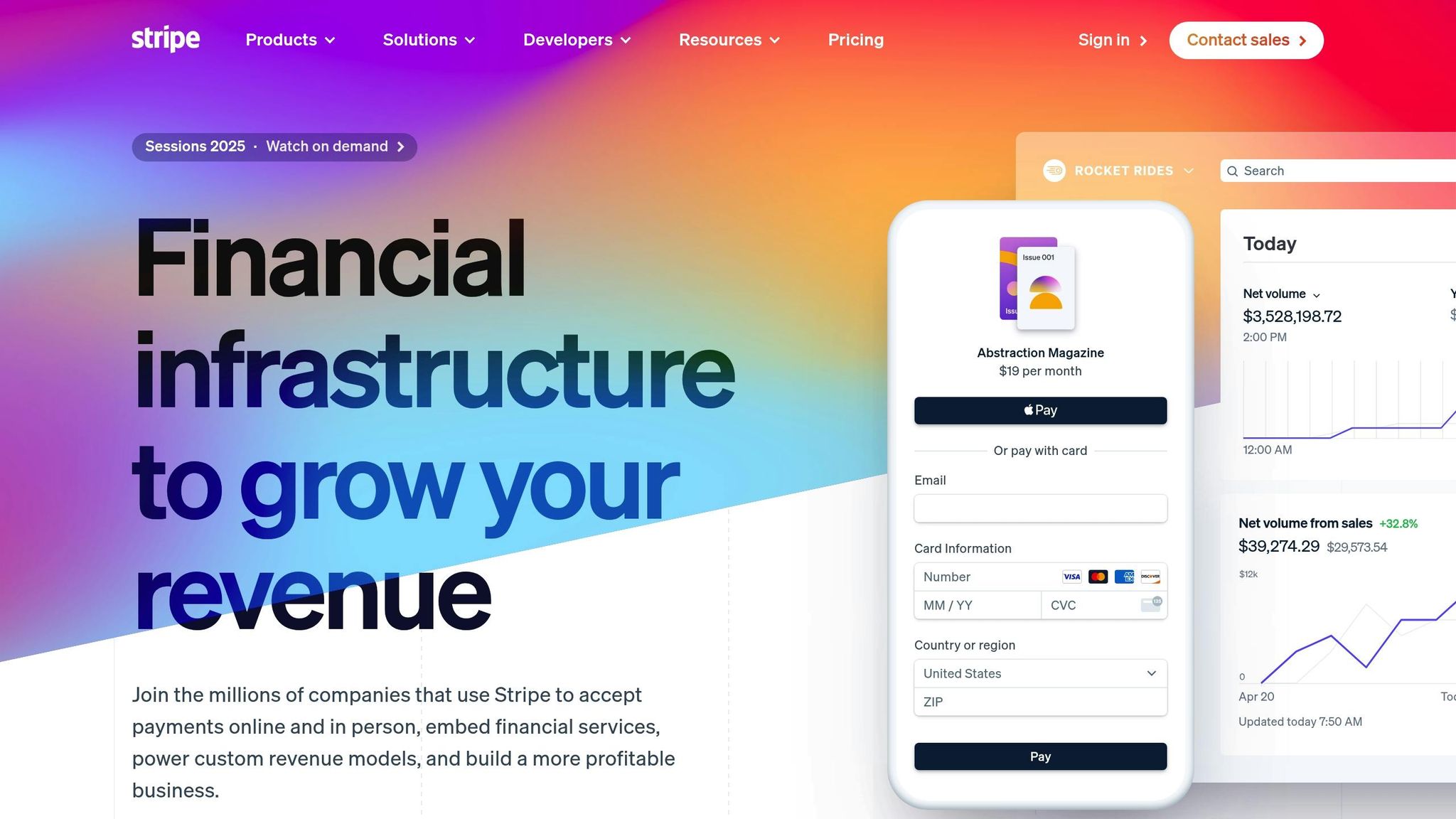
Stripe’s rejection of VoIP numbers isn’t random – it’s a calculated move to reduce fraud and comply with regulatory standards. To understand this, we need to explore both how VoIP technology works and the security measures Stripe has in place.
What Are VoIP Numbers?
VoIP, or Voice over Internet Protocol, numbers function via internet connections instead of traditional cellular networks. Unlike numbers tied to physical SIM cards and cell towers, VoIP numbers handle calls and texts through internet servers.
Services like Google Voice, RingCentral, Grasshopper, and OpenPhone provide these internet-based numbers, offering convenience and flexibility. However, this flexibility comes with a downside: VoIP numbers can be obtained and discarded with ease, making them appealing to fraudsters who want to create multiple accounts or avoid detection. For Stripe, this lack of security and traceability makes VoIP numbers a red flag.
How Stripe Identifies and Blocks VoIP Numbers
Stripe uses sophisticated verification tools to weed out VoIP numbers. This process involves checking carrier databases and classifying numbers to determine whether they belong to a traditional carrier or a VoIP provider.
When a phone number is submitted, Stripe runs real-time checks against telecom databases to identify its source. Numbers tied to major carriers like Verizon, AT&T, or T-Mobile are typically approved. However, if the system detects that the number originates from a VoIP provider, it’s automatically flagged and rejected.
Beyond identifying the carrier, Stripe’s algorithms monitor for suspicious patterns. For instance, numbers that are linked to multiple account creation attempts or show mismatched geographical activity – like a number from one region being used in a completely different area – are flagged as high-risk.
VoIP vs. Real-SIM Numbers: Why It Matters
The distinction between VoIP and real-SIM numbers highlights why Stripe prioritizes the latter. Real-SIM numbers are tied to physical SIM cards and verified identities, making them more secure. They ensure reliable SMS delivery and create traceable audit trails – features that VoIP numbers often lack.
Additionally, real-SIM numbers comply with stricter regulatory requirements, which ensures accountability. In contrast, VoIP numbers, with their looser verification processes, don’t offer the same level of traceability. This disparity is why Stripe leans heavily toward real-SIM numbers to uphold security and maintain compliance.
Real-SIM US Numbers: The Working Solution
Real-SIM US numbers have become a proven option for verifying accounts with Stripe. These numbers function just like personal cell phone numbers, running on the same infrastructure and blending seamlessly into Stripe’s verification system.
How Real-SIM Numbers Work
Real-SIM numbers operate with physical SIM cards registered to major carriers like Verizon, AT&T, and T-Mobile. This setup ensures they appear in telecom databases as standard cellular numbers. When Stripe checks a real-SIM number, it recognizes it as a legitimate mobile line with full carrier registration.
Here’s the key distinction: while services like Google Voice or RingCentral work well for general business needs, Stripe can identify these as VoIP (Voice over Internet Protocol) numbers rather than traditional mobile numbers. VoIP numbers often trigger flags or outright rejections in Stripe’s system. Real-SIM numbers, on the other hand, avoid these issues entirely due to their conventional cellular setup.
This carrier-backed reliability makes real-SIM numbers the go-to option for verification, as demonstrated by JoltSMS.
Why JoltSMS Works for Stripe Verification
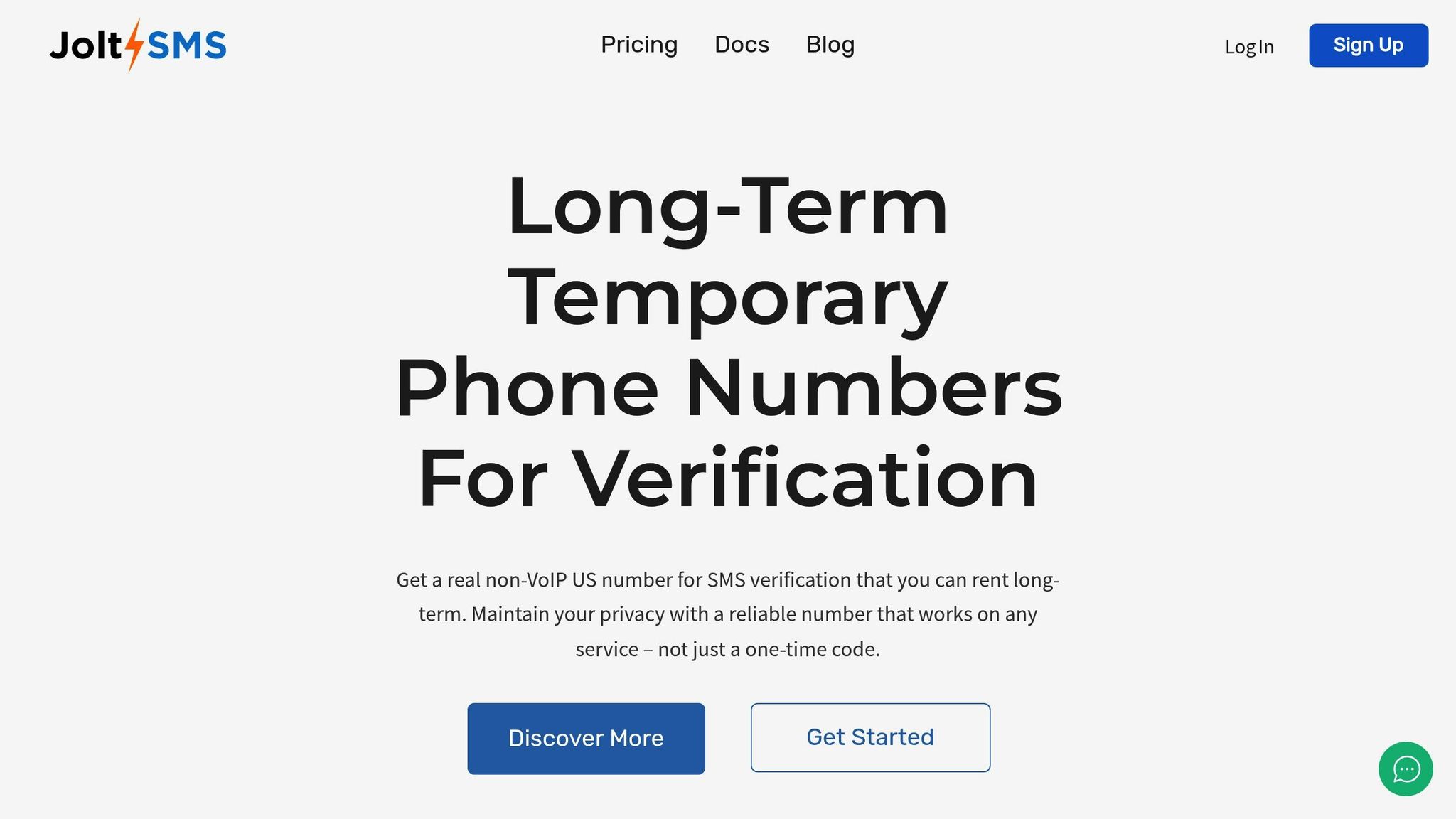
JoltSMS specializes in providing real-SIM US numbers designed to pass Stripe’s stringent verification checks. Each number is exclusive to the renter during the rental period, avoiding the common pitfalls of shared or recycled numbers that often cause verification failures.
The platform guarantees a 99.9% SMS delivery rate because it relies on standard carrier networks rather than internet-based routing. When Stripe sends a verification code to a JoltSMS number, it travels through reliable cellular networks, ensuring delivery is fast and consistent.
Real-SIM numbers boast nearly universal acceptance for Stripe verification, unlike VoIP numbers, which are often rejected. JoltSMS further backs its service with a money-back guarantee: if a number fails verification, users receive a full refund.
Beyond verification, JoltSMS offers features tailored to business needs. Teams can receive verification codes instantly via webhook delivery to platforms like Slack or Discord, eliminating the hassle of manual checks. A real-time dashboard provides live SMS monitoring, and REST API integration allows businesses to automate their verification processes.
For $50 per month, users get unlimited inbound SMS under a fair-use policy, covering typical verification requirements. The service also ensures privacy and security by assigning numbers exclusively to one user during the rental period. Numbers are never shared or recycled while active, minimizing risks and maximizing reliability.
| Feature | VoIP Numbers (Google Voice, RingCentral) | Real-SIM Numbers (JoltSMS) |
|---|---|---|
| Stripe Acceptance | Frequently blocked | Consistently accepted |
| SMS Delivery | Internet-based routing | 99.9% carrier delivery |
| Number Privacy | Often shared or recycled | Private and dedicated |
| Success Rate | Low (majority rejected) | Near-100% acceptance |
| Support | Limited self-service | 24/7 dedicated support |
This combination of reliable carrier networks, exclusive number assignments, and business-oriented features makes real-SIM numbers a dependable solution for overcoming Stripe verification challenges that VoIP services simply can’t address.
sbb-itb-070b8f8
How to Complete Stripe Phone Verification
To successfully complete Stripe’s phone verification, you need the correct phone number and must follow their outlined steps. Opting for a real-SIM number, like those provided by JoltSMS, can help you avoid common verification issues right from the start.
Stripe Verification Steps
Before starting, make sure you have all required business documents ready, such as your EIN, business license, and bank details. Stripe may ask for these during the process, and having them on hand can save time.
- Log in to your Stripe Dashboard and head to the Account Settings section. Depending on your account type, look for either the "Phone Verification" or "Business Information" tab. Stripe usually prompts new accounts for phone verification within 24-48 hours of setup.
- Enter your phone number carefully. Use a 10-digit US number (e.g., 5551234567) without spaces or dashes. Double-check the number you enter, as Stripe limits the number of verification attempts.
- Click "Send Code" to receive your verification code. With a real-SIM number, you should get the code within 30-60 seconds. JoltSMS users also benefit from instant dashboard displays and webhook forwarding.
- Enter the 6-digit code promptly. You have 10 minutes to input the code before it expires. If the time runs out, you’ll need to request a new one.
- Follow any additional steps Stripe requires. Some accounts may need further identity verification or business documentation after completing the phone verification.
If you run into problems, check out the troubleshooting tips below.
Fixing Common Verification Errors
If you encounter errors during the process, here are some common issues and how to address them:
- "This phone number cannot be used for verification": This message typically means Stripe has flagged your number as a VoIP line. Switching to a real-SIM number solves this issue. JoltSMS numbers are recognized as legitimate cellular lines in Stripe’s system and consistently pass verification.
- Missing SMS codes: This is often caused by delivery problems with VoIP numbers, which rely on internet routing and can experience delays or failures. Real-SIM numbers avoid these issues by using direct carrier networks. If you’re using a real-SIM number but still don’t receive the code, check if your carrier’s spam filters are blocking messages.
- "Too many verification attempts": This error occurs after multiple failed attempts with the same number or account, as Stripe enforces limits to prevent abuse. Wait 24 hours before trying again, and ensure you’re using a real-SIM number to avoid repeated failures.
- Expired codes: If you try to use a code after the 10-minute window, it won’t work. Request a new code instead. JoltSMS users can set up automatic forwarding to ensure they don’t miss time-sensitive messages.
- Use a dedicated US real-SIM number: Shared or international numbers often lead to verification rejections or suspensions. JoltSMS provides dedicated numbers that are exclusive to you during your rental period, eliminating issues caused by previous users.
If you’ve tried all these steps and still can’t complete verification, reach out to Stripe’s support team. They can manually review your account and address technical problems that might be preventing automated verification. However, most issues are resolved immediately when switching from VoIP to real-SIM numbers.
Conclusion: Getting Past Stripe Verification Issues
The majority of Stripe verification failures stem from using VoIP numbers. These internet-based numbers are flagged by Stripe’s security measures, as they aim to prevent fraud and maintain account security.
To resolve this, consider switching to a real-SIM US number. Unlike VoIP numbers, real-SIM numbers operate through cellular networks instead of internet routing, making them far more reliable for passing Stripe’s verification checks. For example, JoltSMS provides dedicated real-SIM numbers for $50/month, which are consistently accepted by Stripe and many other platforms.
If you’re facing issues like "number cannot be used" or not receiving SMS codes, your VoIP number is likely the problem. Real-SIM numbers eliminate these headaches by being recognized as legitimate cellular lines, ensuring smooth verification processes.
Investing in a $50/month real-SIM number not only helps you bypass verification delays but also allows you to continue using your VoIP service for regular calls.
If you’re tired of repeated verification failures, now’s the time to act. Secure a dedicated real-SIM US number, complete your Stripe verification, and avoid the frustration of endless errors. With JoltSMS offering a 99.9% SMS delivery rate and a money-back guarantee, you can trust that your verification will go through without a hitch. A real-SIM number ensures your Stripe account stays secure and your business operates without interruptions.
FAQs
Why does Stripe require real-SIM numbers instead of VoIP for phone verification?
Stripe insists on using real-SIM numbers for phone verification because they’re tied to physical devices, offering stronger security and being less susceptible to fraud. These numbers are more difficult to tamper with, reducing risks like SIM swapping and phishing attacks.
On the other hand, VoIP numbers, which operate over the internet, are often seen as less reliable by platforms like Stripe. Opting for a real-SIM number not only streamlines the verification process but also helps safeguard both your account and Stripe’s platform from fraudulent activities.
What should I do if Stripe rejects my VoIP number during phone verification?
If Stripe isn’t accepting your VoIP number during verification, it’s probably due to security measures that restrict the use of such numbers. To fix this, head to your Stripe account settings and update your phone number to one that meets their verification standards. If prompted, you can also choose to re-verify with a different number.
For smoother verification, use a real-SIM phone number, as these are generally accepted by Stripe and similar services for SMS verification. If you’re still running into problems, don’t hesitate to contact Stripe’s support team for help with updating your number or completing the verification process.
Why does Stripe reject VoIP numbers, and how does JoltSMS help with verification?
Stripe often declines VoIP numbers during phone verification because they’re seen as less secure and more susceptible to misuse. To maintain high security standards and combat fraud, platforms like Stripe typically block VoIP and disposable numbers.
This is where JoltSMS comes in. It provides genuine US phone numbers tied to physical SIM cards, which are recognized as secure and trustworthy. These numbers work seamlessly with Stripe’s verification process, eliminating the hassle of failed attempts. With JoltSMS, you benefit from a 99% message delivery success rate and smooth compatibility with platforms like Stripe, ensuring a hassle-free experience.

